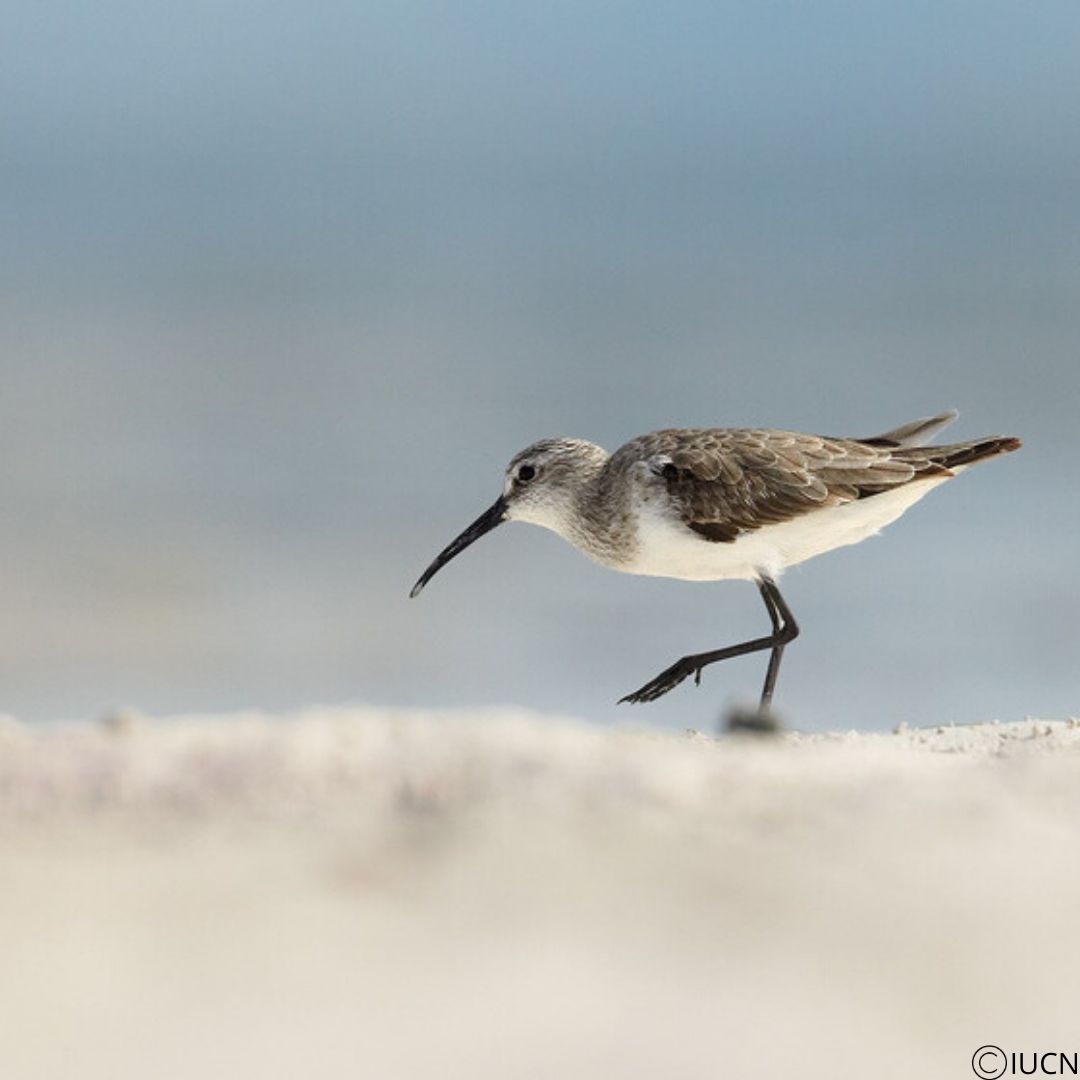Curlew Sandpiper
Scientific name: Calidris ferruginea
IUCN designation: Near Threatened

The Curlew Sandpiper is a small to medium-sized slender shorebird, known for their lengthy migration from their breeding grounds in the Siberian Arctic to their wintering grounds in sub-Saharan Africa, India, Sri Lanka and Australia — an extensive range1!
The Curlew Sandpipers is typically 18-23 cm (7-9 in) long and have a wingspan of 38-41 cm (15-16 in)1,2. It can be identified by its rusty red head, neck, chest, and underparts during its summer breeding season. During the non-breeding season, the plumage is dull grey/brown with a white belly3. The legs and feet are black2. One can distinguish the highly gregarious Curlew Sandpiper from other shorebirds by identifying its long, decurved black bill, white rump, and the white fringes on its dark brown scapular and covert (upper and outer wing) feathers1,4.
The Curlew Sandpiper follows multiple migratory routes. The AMASS project follows two routes going across the western Palearctic: one going towards West Africa and one towards southern Africa, passing through the East African Rift Valley lakes1.
Given its range, the Curlew Sandpiper is exposed to multiple threats which are dependent on the site they occupy. The populations of Curlew Sandpiper which AMASS is following are threatened by habitat degradation due to urban/industrial development and pollution. Additionally, certain areas are threatened by intensive fish/benthic fauna harvesting, water management, and irrigation schemes1,5.
To learn more, visit our Curlew Sandpiper StoryMap or the links below!